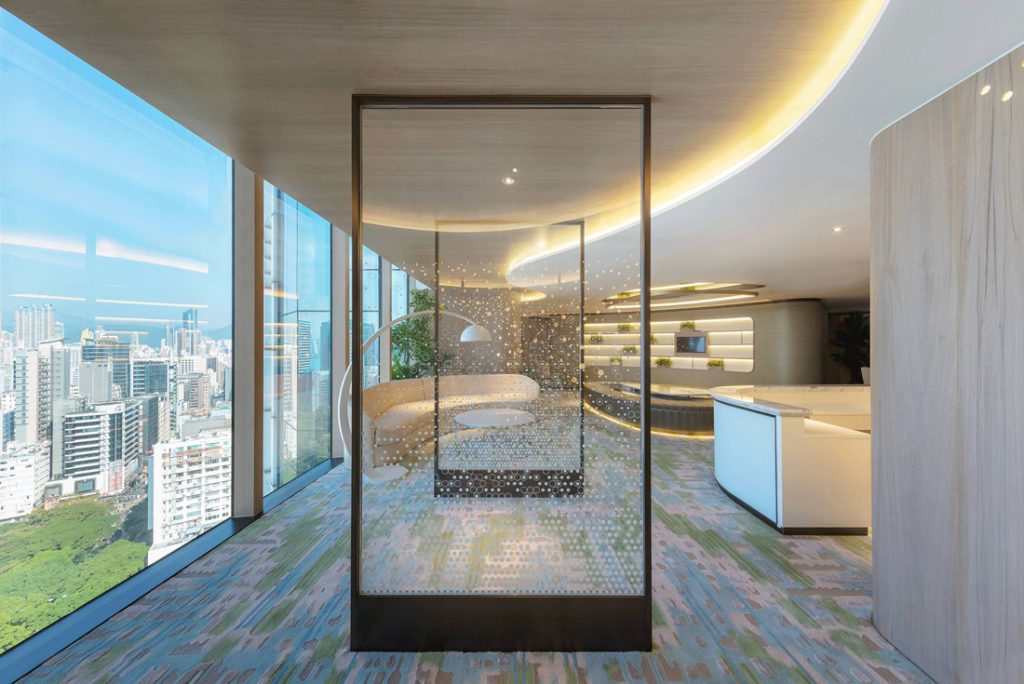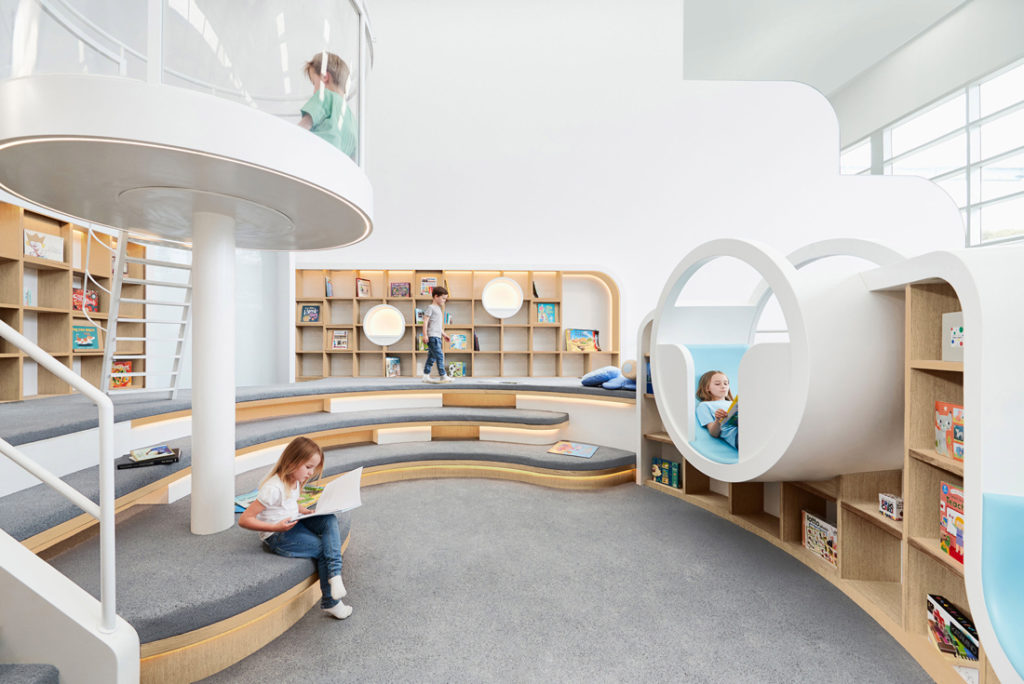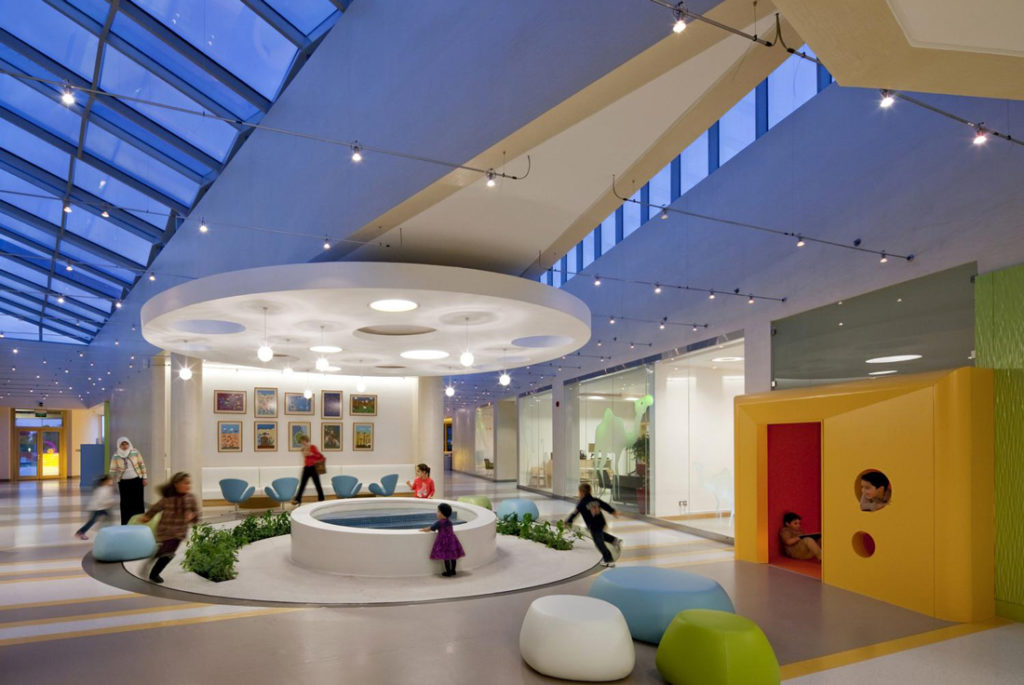What Neuroscience Reveals about Healthcare Design
Share
Neuroscience can reveal much about the secret inner workings of the human brain—and now, it has set its sights on understanding how interior design affects our emotions and well being, even when we are not consciously aware of those effects.
Using noninvasive tools like wristbands to measure our physiological responses to different environments, neuroaesthetic studies reveal subconscious reactions that self-reporting alone can’t uncover. Ivy Ross, who oversees the design of wristbands and other devices used in neuroaesthetics studies as Google’s vice-president of hardware design, explains: “Designers intuitively consider [how] sensory inputs evoke certain feelings in people. Neuroaesthetics offers insight into which inputs evoke specific responses. [It] gives scientific backing to what designers have always known: design matters.”
 A recent exhibit Google co-presented with the International Arts + Mind Lab at Johns Hopkins University revealed how environments that aim for calming or energizing atmospheres can have unintended effects on things like anxiety and even sense of belonging—significant considerations when designing private spaces, and even more pivotal when it comes to public ones.
A recent exhibit Google co-presented with the International Arts + Mind Lab at Johns Hopkins University revealed how environments that aim for calming or energizing atmospheres can have unintended effects on things like anxiety and even sense of belonging—significant considerations when designing private spaces, and even more pivotal when it comes to public ones.
We asked Susan Magsamen, the International Arts + Mind Lab’s executive director, to tell us more. “Public spaces are important for building community and creating unique user experiences,” she explained. “Sadly, often the goals of public spaces are not achieved through the designs and implementations created…The more we can learn about potential [visitor] responses, the better we can design.” Typically, the goals public spaces set out to achieve through interior design are driven less by personal preferences (like the ones that influence the way people decorate their homes) and much more by functional outcomes. It is here that neuroaesthetics really shines.
Consider healthcare. There is ample evidence that—in addition to being unpleasant in its own right—stress impairs the healing of physical wounds during post-surgery recovery and weakens the immune system. No wonder, then, that a trend toward designing healthcare environments to promote calming is in full swing. The catch: what triggers anxiety will differ from person to person. It takes research to discover what works best.
As Magsamen explains, neuroaesthetics can identify elements that promote calming—and health. “We’re already researching how scent can change experiences in emergency and urgent care. Music is being used to help people wake up from surgery and not feel so scared. Color to reduce anxiety is being used in many situations, and is being studied with a focus on blues and greens for calm.”
Alone, these kinds of design considerations may not have a noticeable effect, but they add up to a greater whole. Informed by neuroaesthetics studies, interior designers can make individual design choices with an eye to how they will contribute to the overall effect. “Taking a sensory perspective on healthcare spaces changes the lens on design at every aspect,” Magsamen says.

In educational spaces, by contrast, the desired outcome is not only reduced anxiety (although that is a factor; as Magsamen points out, “Children need to feel safe and secure”), but also improved concentration and focus, and even a dash of inspiration.
“Neuroaesthetics can make a huge difference in learning outcomes,” Magsamen confirms. “Space, light, nature settings, and acoustics are hugely important. This work is already underway. We know that context and content matter.” Here, factors like natural light and an ability to interact with nature are key; in furnishings, those that provide “immersive experiences and integrated technology” work best, she says.
Crafting an interior that feels stimulating yet comfortable, secure yet inspiring is a big enough challenge when it comes to all learners. People with attentional issues require extra attention when it comes to environmental distractions to learning—students on the autism spectrum, for example, or students with ADHD. Here, consistent sunlight, extra room to move around and private spaces students can retreat to are crucial—and equally important are acoustic considerations. Floorcoverings and furnishings that promote quiet can help dampen sensory input and boost focus.

“Designing multi-sensory touch spaces, along with motor learning experiences, is very helpful for children with autism, Asperger’s, and ADHD,” Magsamen adds. “Light and color also play huge roles.” This suggests another way neuroaesthetics can help designers select furnishings that contribute to an interior’s overall objective. Colour and line, softness and hardness, lightness and darkness, comfort and quiet—all of these can have profound effects on learning, even if they go largely unnoticed most of the time.
Of course, all this is to mention only two possible objectives for public spaces. There are countless others: what if the desired outcome for an interior is to foster a sense of trust? To help people fall asleep? To prevent loitering? To encourage visitors to socialize with one another?
With so many possible design elements in play, and all of them interacting with one another, the overall effect is almost too complex to grapple with—but it’s this challenge that makes design so rewarding. And while the discipline remains more art than science—even when it’s driven by specific outcomes—tools like neuroaesthetics can provide a new model for crafting interiors, and a new window on the practice of design.
A version of this article was originally published on https://www.globalfurnituregroup.com/insight/neuroscience-part2-education-and-healthcare












